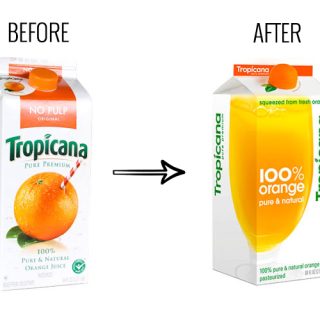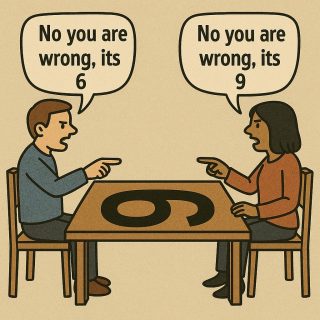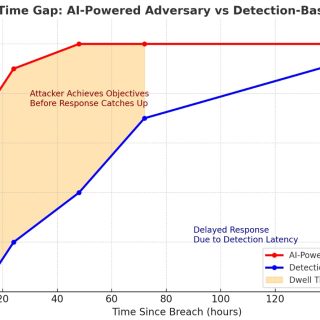
Building a successful company is often romanticized as a journey of grit, innovation, and relentless execution. While all of these are indeed vital, they overlook one crucial, often misunderstood element: the art of process design. Building a sustainable and scalable company requires not just the ability to execute tasks but also to design the processes that make this execution seamless and repeatable. Many companies fail because they assume that execution skills automatically translate to design skills—a risky misstep that can undermine even the best intentions.
In reality, the skill of designing processes—architecting the very blueprint of how a company operates—is rare, and it’s often underestimated. Process design and execution are two distinct roles, each demanding different mindsets and skill sets. Failing to recognize this can put the entire company at risk, as few people are both natural architects and efficient executors.
The Distinction Between Designing and Executing
Process architects are the strategists, the visionaries who foresee potential obstacles and engineer solutions before they occur. They’re the ones who design systems to be flexible, scalable, and capable of adapting to growth. Creating such systems is not merely about outlining a few workflows; it’s about establishing a foundation that enables the company to grow seamlessly. These architects have a deep understanding of the business’s goals and can envision how every function—from sales to support—should interlock to drive forward momentum.
Meanwhile, executors thrive in implementation. They’re the people who ensure these processes are brought to life with energy, precision, and an eye for detail. Executors are essential for getting things done, turning plans into action. Yet, just because they excel in using existing processes doesn’t mean they are naturally inclined to create those processes from scratch.
The Risk of Overestimating Execution as Design
Too often, companies assume that a skilled executor will naturally be able to design the processes they’re implementing. This assumption can be dangerous. Let’s take a familiar analogy to illustrate the point: someone who knows how to drive a car is highly skilled at operating it within its design and capabilities. They can navigate different terrains and adapt to road conditions. However, being able to drive does not mean they know how to build a car. Car building requires a mastery of engineering, mechanics, and safety standards that go beyond the skill of driving. Asking a driver to build a car is unreasonable and, quite frankly, a recipe for disaster. Similarly, expecting a talented executor to also be a process designer can lead to inefficiencies, misaligned goals, and burnout.
An executor might be great at managing client relationships or executing day-to-day operations, but that doesn’t mean they can create a robust, company-wide system for client success. The unique skill set required to architect a process includes strategic foresight, an understanding of scalability, and the ability to engineer processes that align with long-term company goals. When companies blur the line between these roles, they risk implementing poorly designed systems that collapse under the pressure of growth.
Why Process Designers Are Indispensable
Process designers bring an invaluable level of clarity, purpose, and scalability to a company. Their rare skill set is foundational to building a business that can stand the test of time. Here are three key ways process designers add value:
- Foreseeing Challenges – Process architects anticipate challenges that might arise not only in the present but also in the months or years ahead. They build systems that are resilient, adaptable, and prepared for the unknown, a skill that can only be honed through experience and strategic insight.
- Enabling Scalability – Processes should be designed to support growth, from the first few team members to hundreds or even thousands. Process designers know how to make systems that scale, allowing for smooth transitions as the company grows.
- Creating Self-Improving Processes – Exceptional process designers create processes that are not static but self-improving. They achieve this by implementing a measurable framework within each process, enabling it to be evaluated, refined, and optimized over time. By employing the Deming Cycle (Plan-Do-Check-Act), they establish a continuous feedback loop that ensures processes evolve and adapt based on real-world outcomes. This approach embeds a culture of constant improvement, making processes more efficient and effective as the company grows.
- Empowering Execution – Great process designers understand that execution needs structure but also flexibility. They build processes that empower executors to adapt, innovate, and perform their work in ways that feel natural and comfortable to them. This approach increases employee satisfaction and ensures that the processes continue to evolve and improve organically.
Creating a Company Culture That Honors Process Design
One of the most effective ways to secure your company’s future is to cultivate a culture that values process design as highly as execution. Here’s how to foster this mindset:
- Recognize the Difference – From the outset, acknowledge that process design and execution are distinct skills. Hiring should reflect this understanding, seeking out individuals who specialize in creating processes and those who excel in executing them.
- Encourage Innovation in Execution – After processes are designed, encourage executors to make the systems their own. Empower them to find ways that make their work efficient and rewarding within the existing framework.
- Support the Architects – Provide process designers with the resources, time, and freedom they need to develop robust, sustainable systems. Avoid pressuring them to constantly meet short-term execution demands; this support is crucial to developing high-quality processes.
- Foster Feedback Loops – Encourage those executing the processes to share insights from their experiences. These insights allow architects to refine and iterate based on real-world feedback, enhancing both the design and the functionality of the process.
The Takeaway: Building the Right Team with the Right Skills
In the end, building a company with staying power requires acknowledging that not everyone is a designer. Process design and execution are distinct, and a successful company respects and rewards the rare skill of process design. By investing in process designers to create strong foundations and hiring executors to bring those designs to life, companies position themselves for sustainable growth and resilience.
The greatest companies have a rare combination of vision and action. They’re built on the shoulders of process architects who craft the pathways and supported by executors who turn vision into reality. When these two roles work in harmony, a company can unlock its true potential—turning a dream into a legacy.



